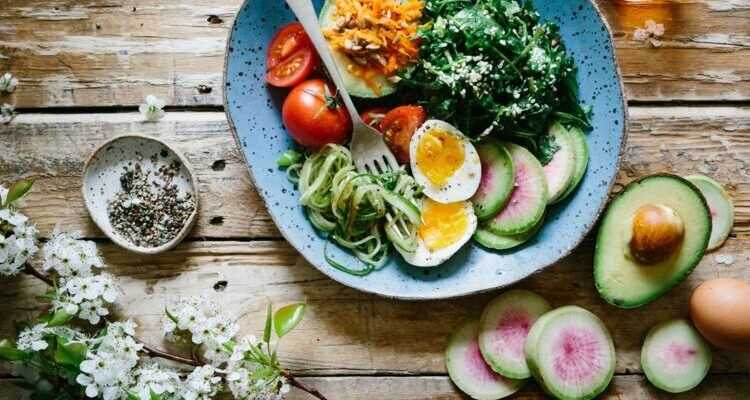The Da Vinci diet or "slimming code" is a method that is not new. It was developed by Stephen Lanzalotta, a baker from Portland, in the North West of the United States. In 2004, the latter explained to the media CBS News that he had the idea to develop this diet because he had lost half of his customers to the craze for low-carb products.
To create the "Da Vinci Diet", in other words the "Da Vinci Diet", the baker was inspired by the book Da Vinci Code by Dan Brown so that consumers will eat bread again. "He's neither a nutritionist nor an academic – he trained in biology and biochemistry. But Lanzalotta says people have been eating bread for too long for that to be suddenly the reason everyone is putting on weight.", can we read in the publication of CBS News.
After developing this method, Stephen Lanzalotta wrote a book on The Da Vinci Diet. The latter was published in 2006 and is titled The slimming code – Today's method and recipes inspired by Renaissance principles. It contains recipes as well as advice to follow to the letter to achieve the Da Vinci diet and achieve an "ideal" nutritional and physical balance.
What does the Da Vinci diet or "slimming code" consist of?
The principle of the Da Vinci diet is to eat a healthy and balanced diet to lose weight. To achieve this, this method is based on the "golden ratio", also known as the "divine proportion", so that the dieter can eat any type of food in adequate amounts. This number, which corresponds to 1.618, is the value of a proportion. It is irrational like "pi".
It has long fascinated philosophers, mathematicians but also artists. This value, whose symbol is "phi" (from the sculptor Phydias), is used in architecture but also in painting. Italian painter Leonardo da Vinci used the "golden ratio" to find the ideal proportions for his portraits, especially his work The Vitruvian Man.
Within the framework of the Da Vinci diet, this figure makes it possible to calculate and define the so-called "ideal" proportion of proteins, carbohydrates and fats for healthy and balanced eating. Stephen Lanzalotta has used the "golden ratio" to prepare his weight loss recipes.
Da Vinci diet or "slimming code": in practice, how does it work?
There is no need to count calories as part of the "slimming code" diet. But great importance is placed on the balance of food intake. The quantified intakes are those of three nutrients: proteins, lipids and carbohydrates. According to the American baker, the perfect proportions for each food are 52% carbohydrate, 20% protein and 28% fat.
"The Da Vinci diet consists of the foods consumed by ancient philosophers and artists, namely fish, cheese, vegetables, meat, nuts, wine and bread", can we read in the article of CBS News. A study published in November 2018, in the journal Journal of the Pakistan Medical Association, specified that "Fresh, fiber-rich and vegetarian foods make up the bulk of the Da Vinci diet. (…) Water and water-rich foods are recommended."
What are the disadvantages of the Da Vinci diet or "slimming code"?
According to dietician and nutritionist Elsa Orivel, the Da Vinci diet can be difficult to stick to in the long term because it is quite restrictive. "It is easier to count calories or refer to a list of permitted and prohibited foods than to check the percentages for each food", she explains.
The nutritionist indicates that this may be possible, but only if we follow the recipes in Stephen Lanzalotta's book to the letter or if we use an application that displays the nutritional composition of each food in order to obtain the said breakdown.
As part of this diet, the proportion of carbohydrates is higher than that offered in usual diets. It may therefore be easier to follow for people who cannot completely cut sugar from their diet, but it is not. "judicious" especially when it comes to losing weight, according to the dietician.
"The notion of total calories is forgotten here. On the other hand, that of distribution is important. But we also need to know if this diet is suitable for any lifestyle or a sporting activity, for example. Without its information, this method is limited to the distribution of macronutrients ", specifies the dietician.
Da Vinci diet or "slimming code": is it dangerous for health?
Elsa Orivel considers that the "code slimming" diet is not a dangerous method because it is close to a balanced diet. The Da Vinci diet respects French recommendations in terms of nutrition. And for good reason, the National Food Safety Agency (ANSES) considers that "the optimal range of fat intake is set at 35-40% of energy intake", that in proteins is estimated at 10-20% and that in carbohydrates is fixed at 40-55%.
But, according to the dietician, this diet does not follow the recommendations usually given in the context of current diets because the proportion of carbohydrates is high. In his book, Stephen Lanzalotta insists that his diet does not recommend banishing sugars. "You can indulge in sweets without worrying about compromising your results. Yes, you can go against the dietary advice of decades past. Eat bread! Eat butter!", can we read in an excerpt from his book published by the media ABC News.
"As part of the Da Vinci diet, we reduce fat and increase sugars. This is the reverse of low-sugar diets, which generally have a higher fat content," reports the nutritionist.
Thanks to Elsa Orivel, dietician and nutritionist at Foodvisor
Read also :
⋙ Military diet: what is this method that promises weight loss in one week worth?
⋙ F-Factor Diet: what is this method that promises lasting weight loss worth?
⋙ 80/20 diet: what is this method that allows you to lose weight while having fun?
